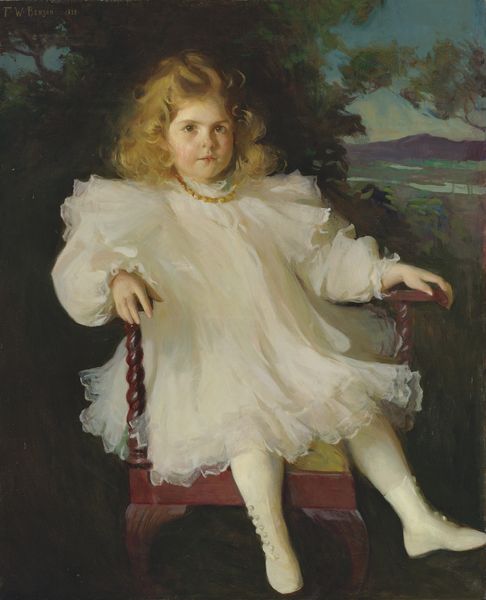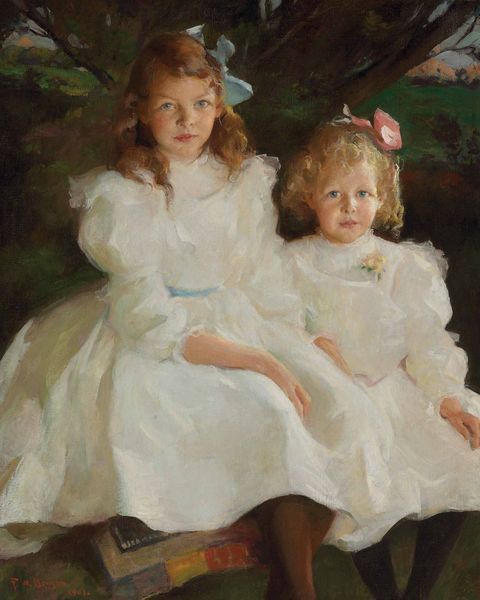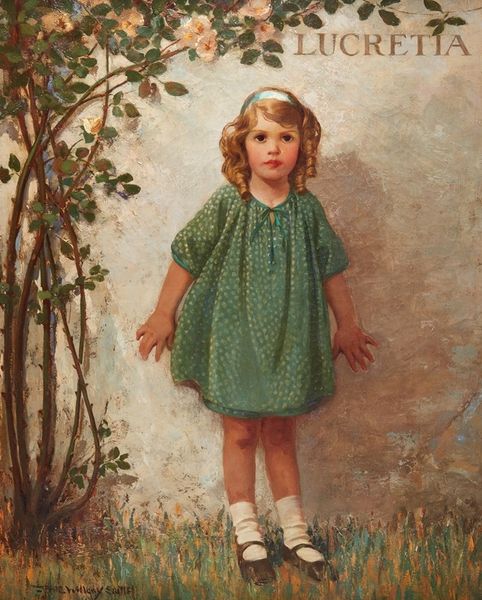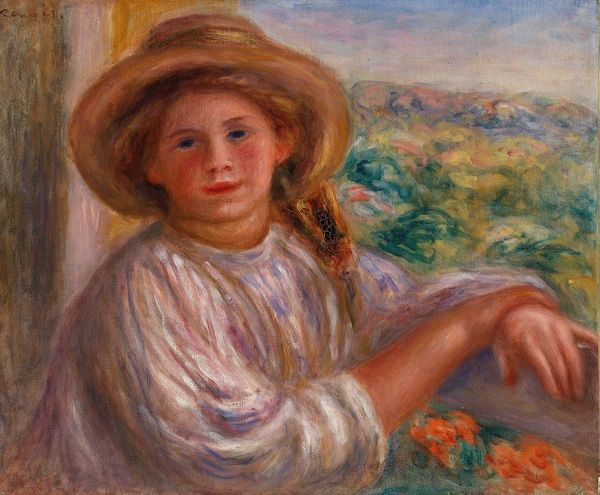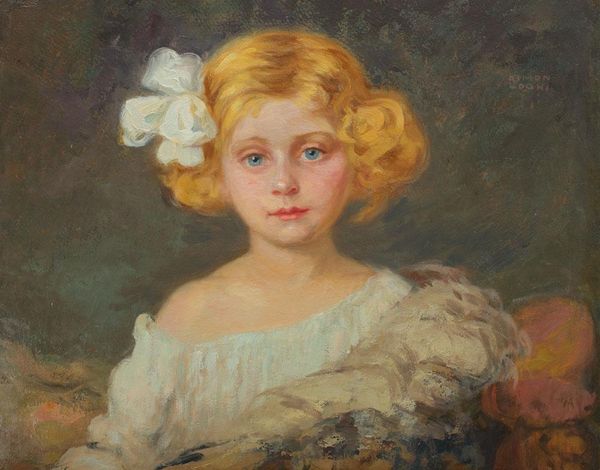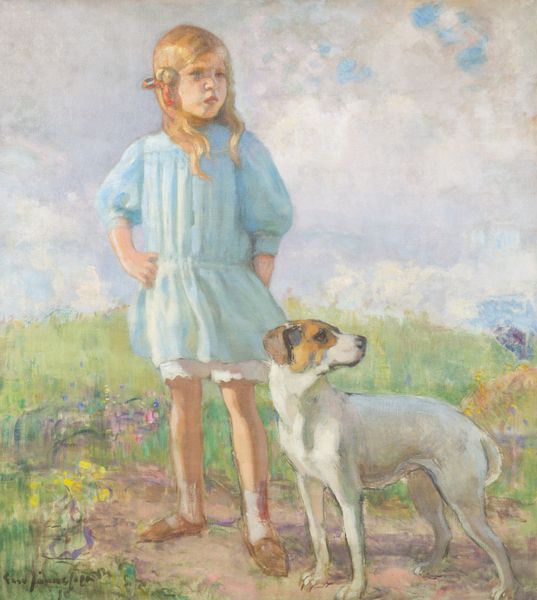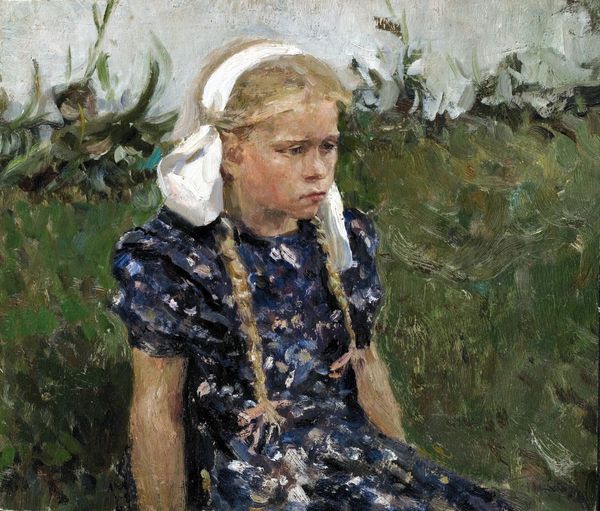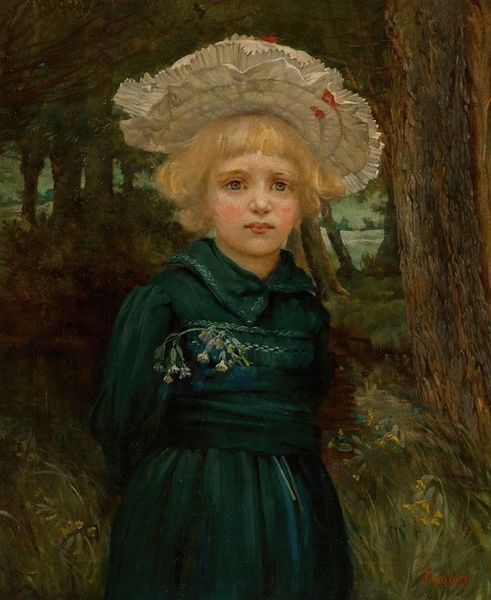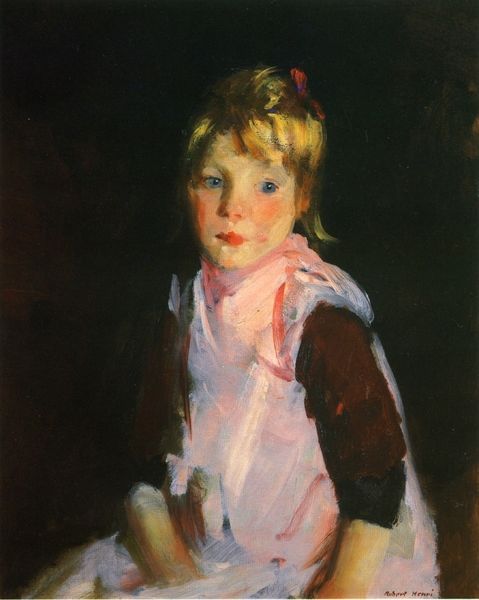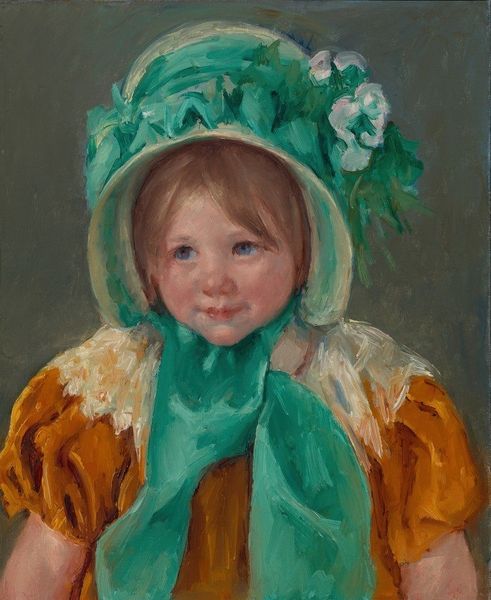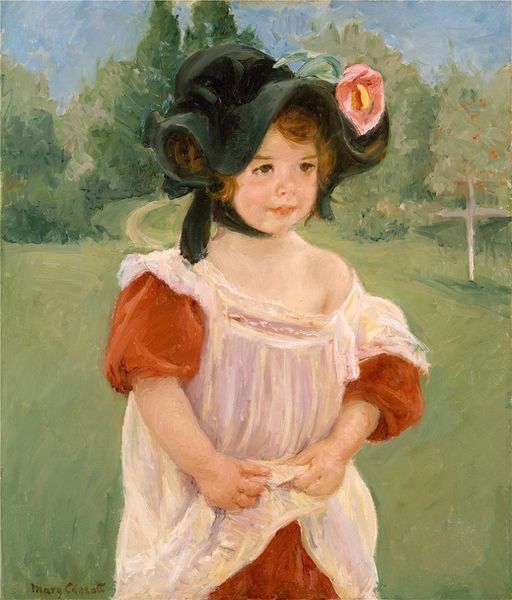
Copyright: Public domain
Editor: Here we have Frank W. Benson's "Girl with Pink Bow," painted around 1905, using oil paints. I'm struck by the looseness of the brushwork, and the way it captures a fleeting moment of childhood. How do you read this piece? Curator: This painting, ostensibly a portrait, actually reveals much about the leisure and class structures of the time. Look closely at the facture – the way the paint is applied. The visible brushstrokes weren’t just about capturing light; they signalled a particular mode of production associated with bourgeois pastimes. Does the choice of "plein-air," suggest anything to you? Editor: Maybe it means he had the time and resources to paint outside? Curator: Precisely. The Impressionists’ move outdoors wasn't just aesthetic; it depended on new technologies—portable easels, pre-mixed paints in tubes—and a societal shift toward leisure. The very act of painting outdoors, depicting scenes of middle-class leisure, speaks to a specific context of production and consumption. The pink bow, for example, signals manufactured materials. Editor: So the pink bow isn’t just a charming detail? Curator: No, it speaks volumes about the industrialization of color and fabric. It’s mass-produced and therefore accessible, reflecting changes in consumer culture. Even the girl’s pose is calculated, implying a life free from the need for labor, she *is* the labor, posing is a contribution. Consider, too, the labor of the artist himself. It takes resources to learn the methods to work as a skilled painter! Editor: It's fascinating to consider the bow, and painting style, as signs of larger social changes. I will never look at it as "just" a pink bow again. Curator: Absolutely. The means of production always leave a trace, reshaping the cultural landscape.
Comments
No comments
Be the first to comment and join the conversation on the ultimate creative platform.


